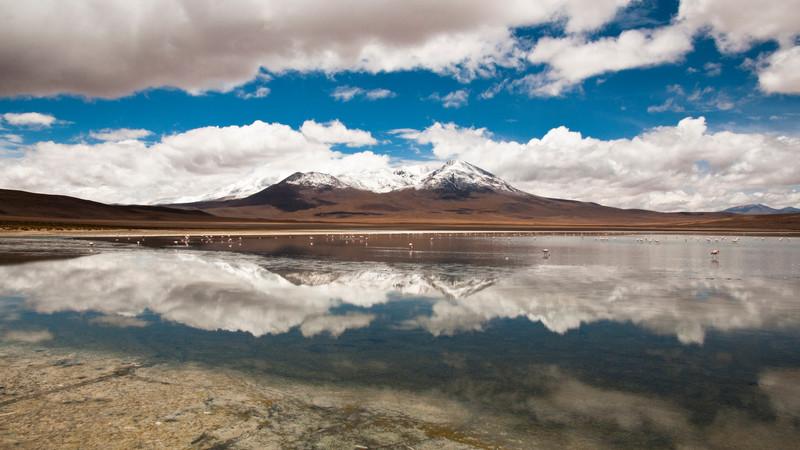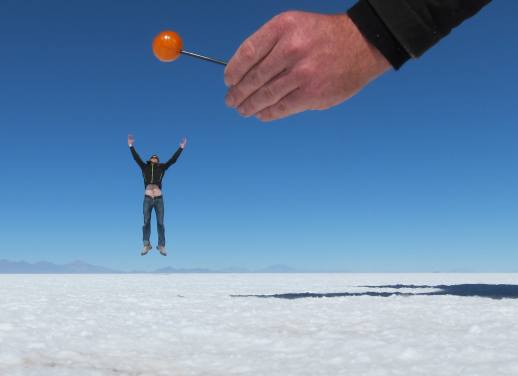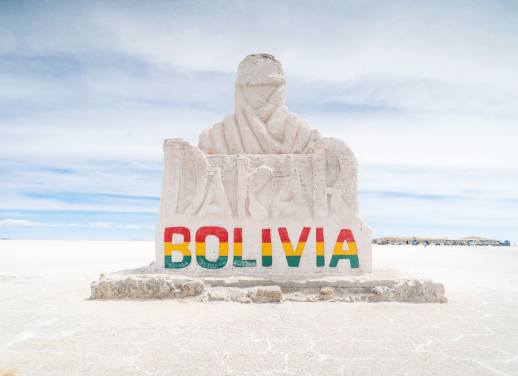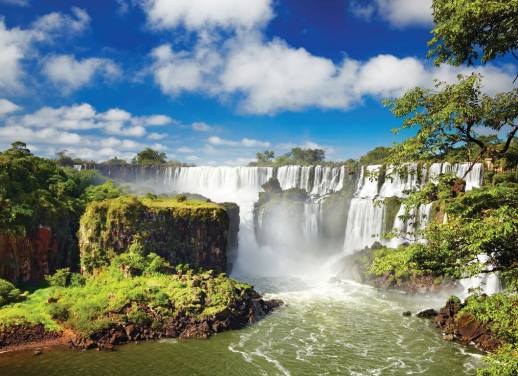UPDATED: This blog was originally published on February 12, 2016.
Unless you’re an astronaut (if you are – can we be friends?), most of us will never walk on the moon. But on the Bolivian Altiplano, you can get pretty close. Rocky desert forests, pockmarked roads leading to wind-whipped towns, salt pans spiked with cacti, geysers belching sulphur… the landscape here doesn’t have your usual boring terrestrial vibe.
Empty, haunting and spectacular, the laws of earthly physics bend on the Salar, especially in the wet season when the salt is covered with a thin layer of water, reflecting the sky back at itself like a cosmic mirror. Lakes are pink, horizons are more an idea than a line, and scale is yours to play with. David Lynch would feel right at home here. So would Salvador Dali.
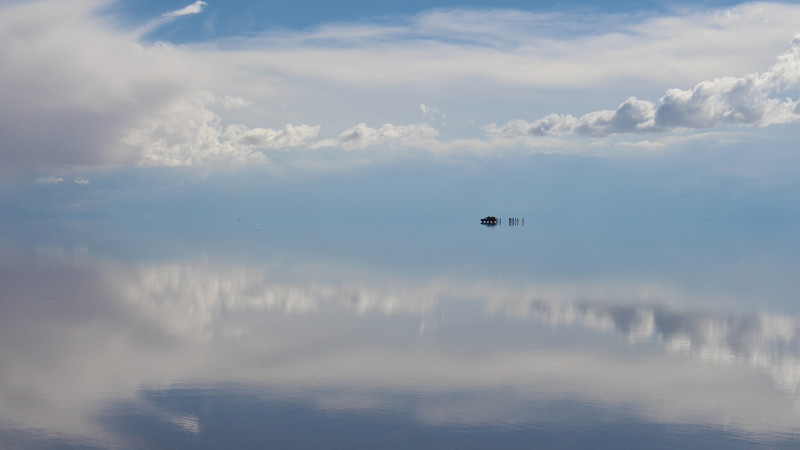
Photo by Rachael Christie
Soooo, what is it??
Taking up an area of over 10,000 square kilometres, and heaving with around 11 billion tonnes of salt, Salar de Uyuni is the world’s largest salt flat. It was formed when Lago Minchin – a prehistoric lake once covering the majority of southwest Bolivia – dried up. Beneath the thick salt crust are huge reserves of lithium-rich brine; in fact, around 70 per cent of the world’s lithium is mined here. Surrounding the Salar are other natural wonders of the Altiplano – belching volcanoes, steaming hot springs and snow-capped mountains. The surreal, sparsely populated landscapes of the region have become one of Bolivia’s biggest draw cards, attracting hundreds of thousands of visitors every year.
RELATED: 10 REASONS WHY BOLIVIA NEEDS TO BE ON YOUR BUCKET LIST
What’s the best way to see it?
One of the best ways to truly experience the Salar is on a guided 4WD tour with six or seven other people. While it’s possible to do day tours across the salt flats, most trips run for three or four days and head deeper into the Altiplano. The price should include a driver, guide and cook (often combined into one very talented human), food, transport and basic dormitory-style accommodation. Avoid tours that spend a night in a ‘salt hotel’ (yep, hotels made of salt), as these run off the water grid and pollute the local environment.
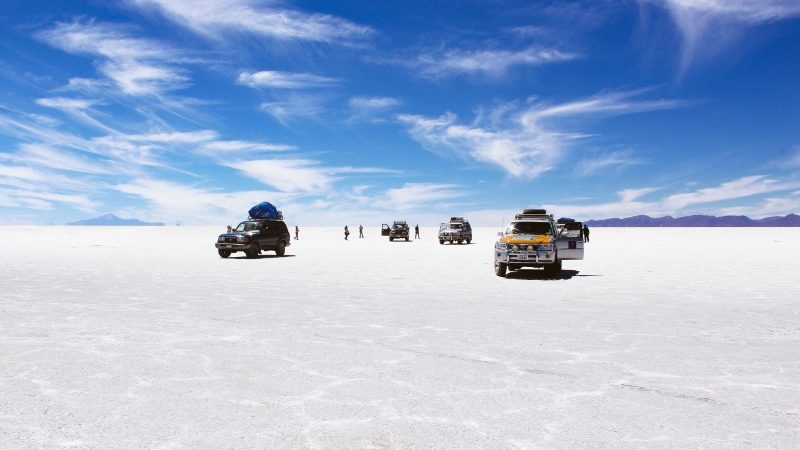
Photo by Loïc Mermilliod on Unsplash
The starting point for most tours is the dusty Bolivian town of Uyuni, but you can also leave out of Tupiza (although expect an extra day of travel if you go for this option). Another way to experience it is to start in the backpacker hamlet of San Pedro de Atacama in Chile – great if you’re travelling north, rather than south – but you’ll pay more for pretty much the same itinerary.
There are heaps of tours to choose from, especially in Uyuni (where you’ll be swamped on arrival by touts), but some are safer and run more efficiently than others. Make sure you know what is and isn’t included, that your vehicle is equipped with seatbelts, emergency radio transmitters and a first aid kit, and that your guide and driver have the proper qualifications. And while it may seem obvious, double check that they’ll be speaking a language you understand!
RELATED: BEYOND SALAR DE UYUNI – 5 GREAT THINGS TO DO IN BOLIVIA
What’s covered?
For tours departing from Uyuni, your first stop is usually the ‘train cemetery’, where families of geriatric locomotives rust slowly in the sun. You’ll spend most of the first day on the vast Salar, passing salt-mines and visiting Isla Wasi, a rocky, cactus-covered island erupting from the endless expanse of salt crust like a hallucination. Over the next few days you’ll head into the Andean Desert to see coral-like rock formations, geysers, hot springs and milky mineral lakes. Keep an eye – and your camera – out for llamas, flamingos, vicunas and foxes.
Intrepid offer a range of trips across the salt flats, both as short, dedicated tours and as part of our greater Bolivia and South America adventures. Unlike most tour companies, some of our trips visit the Coquesa Caves at the foot of the Tunupa Volcano, which are home to ancient ceramics and a mysterious family of millennia-old mummies.
When to go?
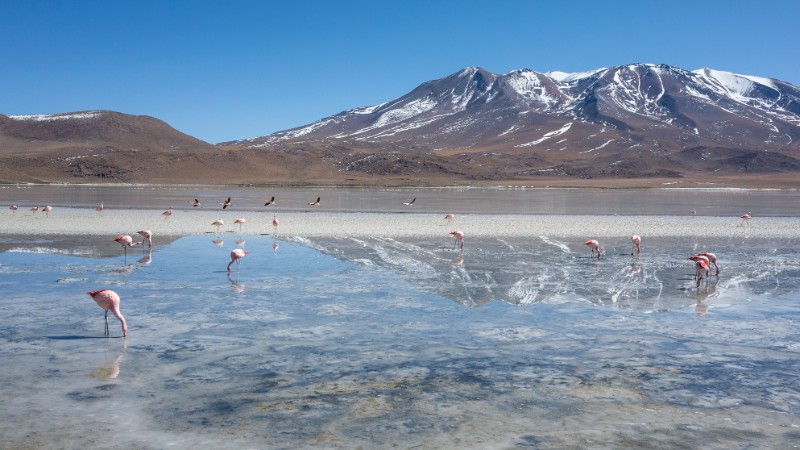
Photo by Nikita Andreev on Unsplash
The flats are accessible year-round. From May to November, the weather is mild and clear, but the salt pans are baked dry, so there’s no mirror effect. From January to April, during the summer wet, the flats are sheeted in water; while mostly drivable, access to Isla Wasi can be impossible.
RELATED: WHY YOU’LL LOVE SAN PEDRO DE ATACAMA
How to get there?
If you’re on a budget, night buses run regularly from La Paz to Uyuni, but be prepared for a very bumpy (and dusty) ride. The bus arrives around 8am, and most tours don’t leave Uyuni until mid-morning, so you should have enough time to grab a coffee and walk around. Buses also operate out of Potozi and Tupiza. Alternatively, you could organise private transport, or catch a train from Oruro or Villazon. Intrepid flies directly to Uyuni from La Paz, saving you time and eliminating the inevitable sleep loss an overnight bus delivers.
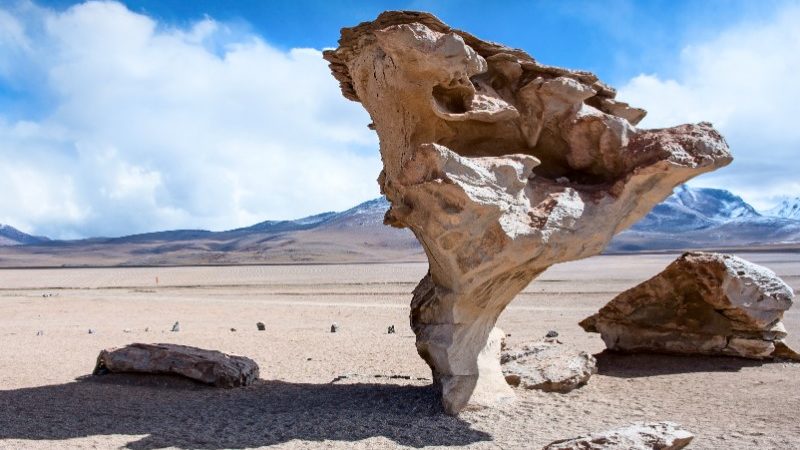
Photo by Byelikova Oksana, Shutterstock
When planning a trip to the salt flats, it’s important to remember that as they sit at over 3,650 metres above sea level, some people can suffer from altitude sickness. If you can, plan to spend a few days in La Paz to acclimatize beforehand.
What to bring
- A camera (obviously), as well as extra batteries
- Due to the high altitude, the air is clear and UV can be high
- Sunglasses and hat, to keep off the glare; lip balm to protect from windburn
- Flip flops, or an extra pair of shoes you don’t mind getting wet
- Warm clothes and layers. At night, it gets cold, especially from May through November
- Warm sleeping bag (you can usually rent one with your tour)
- Bathers and towel, in case you stop by some hot springs for a dip
- Torch (or ‘flashlight’, for our North American friends)
- A little cash, in case you want to use the bathrooms in Colchani or buy a salty llama statue. Some tours don’t include entrance to the national parks or islands in their price, either, so make sure you’ve got enough Bolivianos with you
- Snacks and water. Food and water is provided with a tour, but it’s always a good idea to have a little something extra to nibble on.
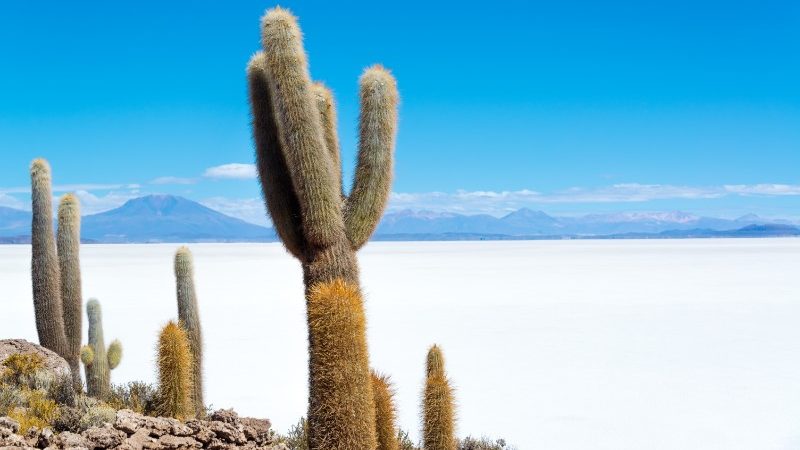
Photo by Jess Kraft, Shutterstock
Photo tips
- Riddle me this: how do you fit an average-sized human on the end of a spoon? Simple – go to Salar de Uyuni (it’s a lot easier than finding a giant spoon). Because of the endless white of the salt pans, it’s easy to mess with perspective and create some slightly daggy (but awesome) snaps of your tour mates standing on various objects. The current trend is to take ‘boot climbing’ pics, but you can get as creative as you want. You may even like to think about bringing some fun props along with you, such as colourful bucket and spade, or a bubble blower
- If you’ve got a tripod, rug up and head outside once the sun sets, because the stars on the Altiplano are something else
- Take a few extra batteries (make sure they’re charged). Trust us, your camera will get a good workout
- If you’re a bit of a pro or you like to dabble, bring some different filters and a wide-angle lens. A lens hood is also a good idea, as the glare can be dazzling
- Think carefully about when you want to visit. If you’re desperate to play with the reflective surface of the flats in your images, it’s best to visit in summer. If you want clear blue skies, go in winter. If you’re cool to wing it, anytime of the year will deliver something unique and spectacular. That’s a guarantee.
Keen to see all this for yourself? Book onto an Intrepid Bolivia small group adventure.
Feature image by Emma Goddard

